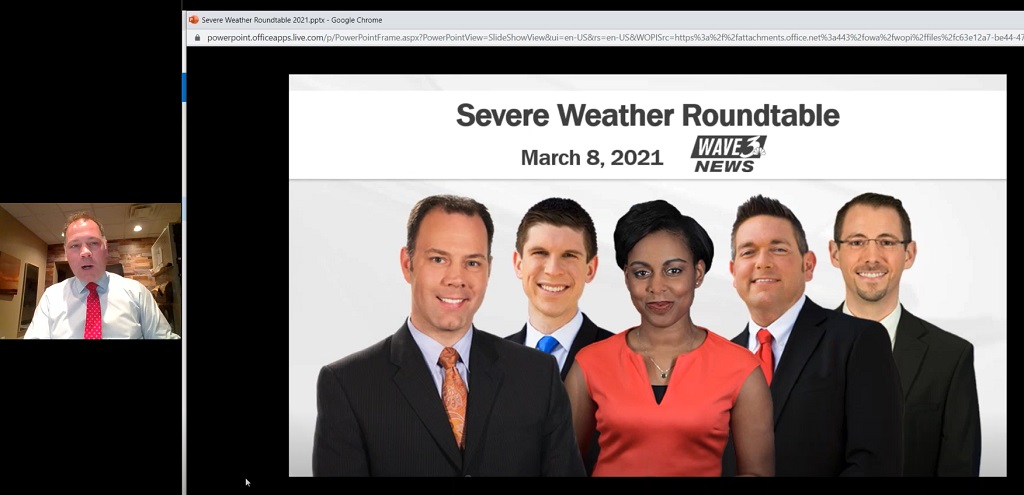
A winter-like pattern will continue over much of the Lower 48 over the next few days, with snow stretching from the Rockies today into the Middle Mississippi Valley on Monday. Showers and thunderstorms will develop along the Gulf Coast and Southeast on Monday. As the storm moves northward late Monday into Tuesday, winter weather is possible from the Central Appalachians to Interior New England. Read More >
Each year, National Weather Service (NWS) Louisville holds a couple of roundtable discussion meetings, to prepare for an upcoming season of weather. Typically some time in March we hold the Severe Weather Roundtable discussion, where all of the staff members get together to talk about the Spring severe season. Monday, March 8th, we held this meeting, which started with WAVE3 Louisville's chief meteorologist, Kevin Harned, speaking virtually about how his team handles severe weather. The discussion also included what NWS products they use most frequently as well as some areas that we can work on to improve our partnership. One successful interaction is through a program called NWSChat, a platform where we can talk directly with our partners in the media, emergency management, and other communities. In this platform, we give our thoughts for how storms are evolving as well as a heads up when we plan to issue warnings/watches for a given area.

Meteorologist Kevin Harned from WAVE3 news in Louisville gave a brief presentation and then had a Q&A session with the Louisville NWS team, with Ryan Sharp, John Gordon, and Brian Neudorff in picture on the right.
After that discussion, the team focused on reminders for how we will be working more as a team to make decisions on severe weather warnings this season, including the potential to use some new initiatives at the regional and national levels for diagnosing the severe weather environment as well as searching social medial for valid storm reports. We looked at some new ways to find threats in upcoming forecasts based on an ever increasing number of weather models that we have to choose from (one tool illustrated below).
A presentation on the Extreme Forecast Index (EFI), where we can see when the spread of members in a model forecast indicate an event that is anomalous to climatology...and just how far shifted it is away from "normal".
We then shifted focus to some recent past events and how our various programs did. One was looking at how we can make sure and put out effective social media messages, that get people to notice when hazardous weather is approaching. We talked about strategies for trying continue improving this messaging, so that our main mission in the NWS, to protect lives and property, can be accomplished.
Our most popular social media posts from the last month's worth of wintry weather.